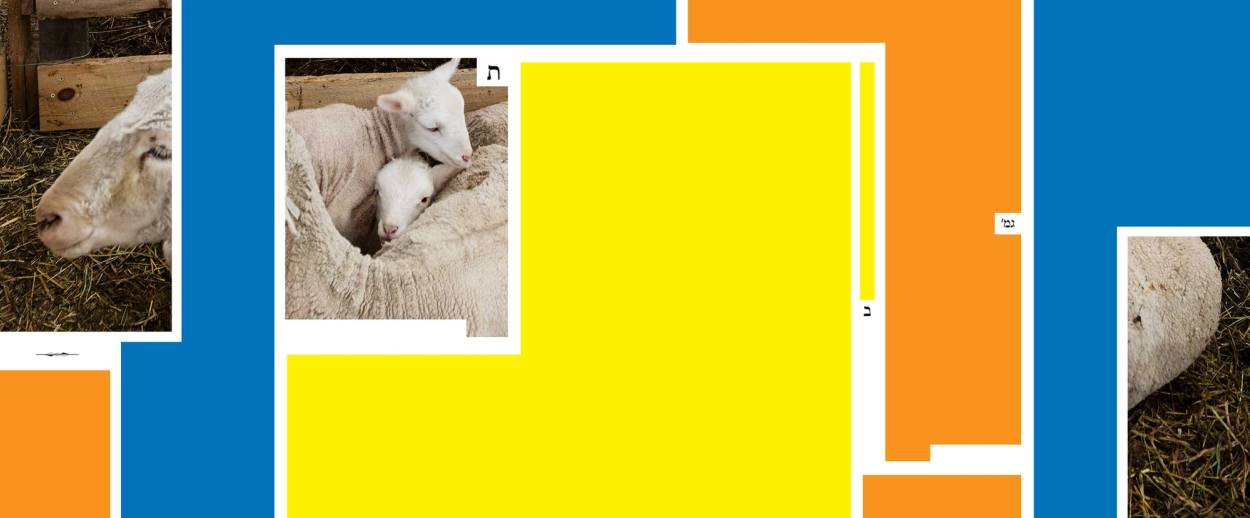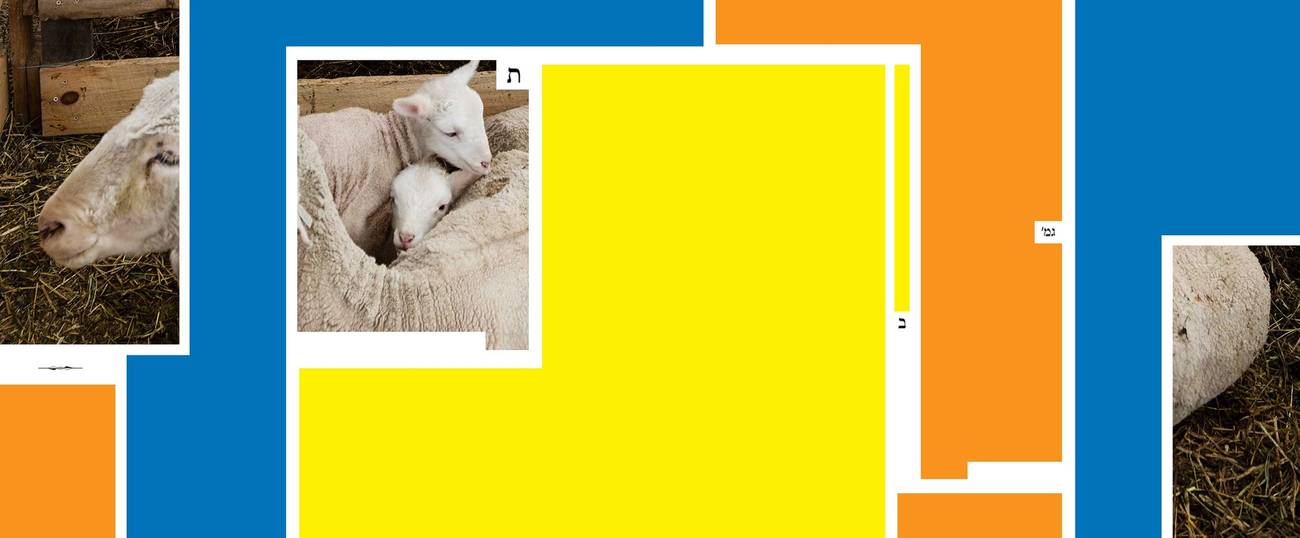Offspring Fever
In this week’s ‘Daf Yomi,’ prohibitions against slaughtering the young of sacrificed livestock reveal the thoroughness and complexity of Talmudic study of contingencies




Literary critic Adam Kirsch is reading a page of Talmud a day, along with Jews around the world.
The first four chapters of Tractate Chullin went into great anatomical detail about the correct way to slaughter animals. But in Chapter 5, the focus shifted from sinews and windpipes to a seemingly simple rule that turns out to conceal a number of puzzles. Leviticus 22 lists several conditions that invalidate an animal for sacrifice, including this one: “And whether it is a bull or a sheep, you shall not slaughter it and its offspring both in one day.” It’s only a few words, but exploring their full implications turns out to take several pages of Talmudic debate.
First, the mishna in Chullin 78a expands the scope of the Torah’s statement, which seems to apply only to sacrificial animals that are being offered up in the Temple. According to the rabbis, however, the prohibition against slaughtering a parent and its child on the same day applies “with regard to nonsacred animals and with regard to sacrificial animals.” Further, it applies inside the land of Israel and outside, and in post-Temple times as well as when the Temple stood. Rather than a rule governing sacrifices alone, it turns out to be a principle of all kosher slaughter everywhere.
Figuring out which animals are valid for slaughter under what conditions turns out to be a logic problem with several possible permutations. In any given act of slaughter, there are three issues at stake: Is the animal a parent or child of another animal slaughtered the same day, is it sacred (that is, consecrated for Temple sacrifice) or nonsacred, and is it being killed inside or outside the Temple courtyard. For instance, an animal could be a nonsacred daughter sheep slaughtered inside the courtyard, or a sacred mother sheep slaughtered outside the courtyard, or a sacred daughter sheep slaughtered outside the courtyard, and so forth.
Things get even more complicated because each of these conditions involves a prohibition, but they carry different punishments. Slaughtering a mother sheep and a daughter sheep on the same day results in 40 lashes, while slaughtering a sacred animal outside the Temple courtyard, a much worse sin, earns karet, cutting off the soul from God, which is the ultimate punishment.
To figure out the legal consequences in each case, then, the mishna must run through all the permutations. Take, for instance, the case of a man who kills a mother sheep and its daughter, and “both animals were sacrificial animals slaughtered outside the Temple courtyard.” For killing the parent and child on the same day, the man earns 40 lashes. One might also think that he earns karet twice, since he has killed two holy animals in a profane location. But in fact, it turns out he is only liable for karet for the first slaughter. The reason is that, once he has slaughtered the mother sheep, the daughter sheep becomes legally ineligible for slaughter, and so when he kills it in the Temple courtyard, he is not actually performing a (forbidden) act of slaughter at all; he is merely performing an act of killing, and that does not earn karet.
Another wrinkle arises when one animal is consecrated while the other is not. Take the case where a consecrated mother sheep is slaughtered in the Temple, followed by its unconsecrated daughter sheep. Here the mother is a proper sacrifice, while the daughter is not, and the man earns 40 lashes for slaughtering them both on the same day. If, however, the unconsecrated daughter is slaughtered first, followed by the consecrated mother, then the latter is not a valid sacrifice, since it was invalidated by the prior slaughter of its daughter; but the man still gets his 40 lashes.
After the mishna has gone through all the possible permutations, the Gemara goes on to scrutinize the rule further. In Leviticus, the law against slaughtering parent and child on the same day is clearly stated about sacrificial animals only. Why does the mishna apply it to regular animals as well? The rabbis offer an explanation based on a reading of the Torah text, which uses the phrase “a bull or a sheep” twice in consecutive verses; this repetition is taken to mean that the ban applies to both sacred and nonsacred animals.
Another question has to do with whether the prohibition applies to just one gender of animals or to both. In the Torah, the phrase “it and its offspring” uses the masculine form of “it,” which might suggest that the prohibition applies only to male animals. Oddly, however, the rabbis say that the reverse is true: It is only a mother and its offspring who may not be slaughtered on the same day. This is because “it and its offspring” is interpreted to mean “that parent whose offspring clings to it”: Since a calf follows its mother, not its father, it is the mother who cannot be slaughtered on the same day.
If you are a farmer raising livestock, it is easy enough to avoid slaughtering a cow and its calf on the same day. But what if you take your cattle to market and sell the mother to one buyer and the daughter to another? The prohibition against slaughtering both cattle on the same day still applies, even if they are slaughtered by two separate owners; so which purchaser has precedence? The mishna in Chullin 82a gives the answer. The person who makes his purchase first gets priority in slaughter, which sounds only fair; but, the Talmud goes on to say, if the second purchaser goes ahead and slaughters first, “he benefited,” and the first purchaser has no remedy. He has to wait until the next day to enjoy his meat.
And how does one measure a day for these purposes? Is it 24 hours or a calendar day? This is the subject of the last mishna in the chapter, in Chullin 83b. In the story of Creation in Genesis, the rabbis explain, “the day follows the night,” as in the formula “and it was evening and it was morning.” Likewise, for these purposes, “the day follows the night,” with a night and the following day forming a single unit. This means that one may slaughter a mother during the day and its daughter after sunset, but not a mother at night and its daughter after sunrise.
***
Adam Kirsch embarked on the Daf Yomi cycle of daily Talmud study in August 2012. To catch up on the complete archive, click here.
Adam Kirsch is a poet and literary critic, whose books include The People and the Books: 18 Classics of Jewish Literature.